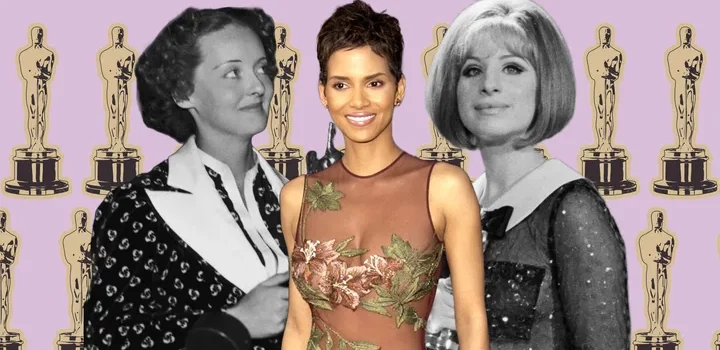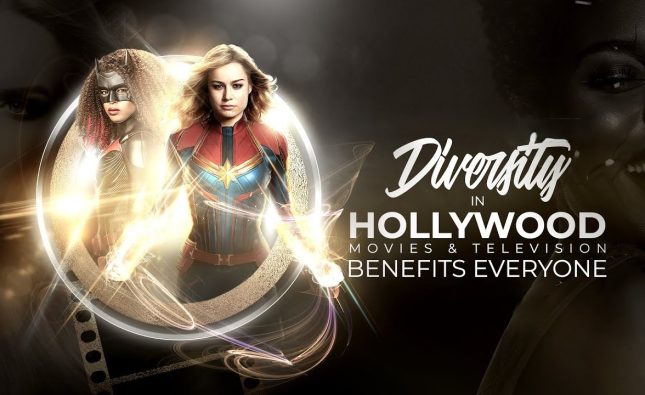
Introduction
Award shows are a celebrated part of the entertainment industry, bringing together the biggest stars, designers, and fashion icons. While these events are about honoring excellence in film, music, and television, they have also become a major platform for showcasing the latest fashion trends. The red carpet has evolved into a fashion battleground where celebrities, stylists, and designers push boundaries to create iconic looks that are remembered for years. In this article, we will explore the evolution of award show fashion, highlighting key changes, trends, and moments that have shaped the industry.
Early Years: Classic Glamour and Elegance
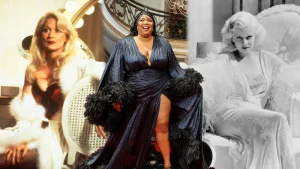
In the early days of award shows, particularly during the 1920s and 1930s, fashion was about timeless elegance. Stars like Clara Bow and Jean Harlow set the tone for a sophisticated, high-glamour aesthetic. The gowns were often long, flowing, and adorned with luxurious materials like silk, satin, and velvet. Women wore their hair in glamorous updos, while men sported tuxedos and classic black suits.
The focus was on class and style, with an emphasis on presenting an image of poise and refinement. These award shows served as a platform for showcasing the best in both talent and fashion, and stars were often expected to wear formal, sophisticated ensembles. This era set the foundation for what we now recognize as classic Hollywood glamour.
The 1950s and 1960s: The Rise of Haute Couture
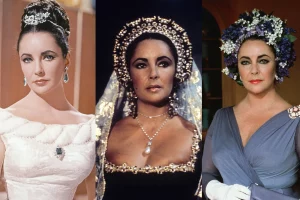
As Hollywood continued to grow in the mid-20th century, so did the fashion. The 1950s and 1960s marked the rise of haute couture, with designers like Christian Dior and Yves Saint Laurent becoming household names. The red carpet became a place for celebrities to showcase the latest high-fashion designs, and actresses like Audrey Hepburn and Grace Kelly became icons of style.
During this period, fashion became more varied, with a shift from the classic long gowns to more playful and experimental looks. The 1960s saw the introduction of shorter hemlines and bold, colorful designs. The famous “flapper” style of the 1920s was revived in some ways, with sleek silhouettes and a more youthful, energetic feel. Actresses like Elizabeth Taylor embraced glamorous, larger-than-life gowns, while others began to wear designs that were more avant-garde.
The 1980s and 1990s: Power Dressing and Bold Statements
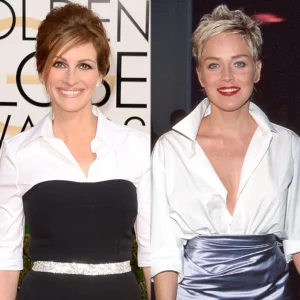
The 1980s and 1990s were characterized by more dramatic fashion choices. This was the era of power dressing, with women embracing bold colors, oversized shoulders, and strong, structured silhouettes. The fashion was a reflection of the shifting cultural landscape, with women stepping into more prominent roles in the workforce and society. Actresses like Sharon Stone and Julia Roberts became synonymous with red carpet fashion during this time.
The 1990s also saw the rise of minimalist fashion, with stars like Gwyneth Paltrow and Kate Moss leading the way. Simple yet elegant slip dresses, sleek hairstyles, and understated jewelry became the norm. The focus shifted from over-the-top glamour to more refined and subtle styles. This era marked the beginning of the shift toward more individualized, unique looks, paving the way for the personalized fashion statements that would dominate in the 2000s.
The 2000s: Red Carpet as a Platform for Fashion Innovation
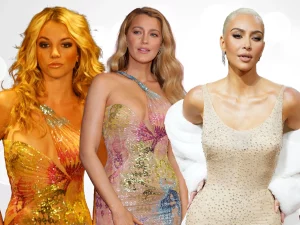
The 2000s saw a major transformation in award show fashion. As celebrity culture became more influential and the rise of reality television changed the public’s perception of fame, the red carpet became a place for stars to showcase more daring and innovative looks. This was the era of the “fashion risk,” with celebrities experimenting with bold styles and designers pushing the envelope.
Stars like Jennifer Lopez, Britney Spears, and Angelina Jolie became known for their fashion-forward choices. One of the most iconic moments of the 2000s was Jennifer Lopez’s green Versace dress at the 2000 Grammys, which became an instant sensation and solidified her as a style icon. The 2000s were also marked by the introduction of more casual styles on the red carpet, with stars wearing more relaxed outfits that blurred the lines between formal and informal wear.
The 2010s: Redefining Fashion Norms
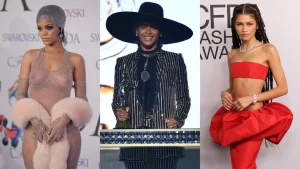
The 2010s were a time of incredible transformation in award show fashion. There was a push toward individuality and self-expression, with stars choosing to wear designs that reflected their personal styles and beliefs. Diversity became a significant factor, with more stars opting for culturally significant fashion choices, and gender norms started to shift.
One of the most significant fashion moments of the 2010s was the rise of the “Met Gala” as a trendsetting event, influencing award show fashion. Celebrities like Rihanna, Lady Gaga, and Zendaya brought attention-grabbing outfits to the red carpet, creating memorable moments that sparked conversations long after the shows were over. This era also saw the rise of gender-fluid fashion, with stars like Billy Porter and Janelle Monáe breaking traditional fashion rules and wearing looks that defied conventional expectations.
Fashion as a Statement of Empowerment
For many celebrities, fashion at award shows is not just about looking good; it’s about empowerment. Wearing a stunning outfit can make a celebrity feel confident and strong. Some stars use the red carpet as a platform to express their personal beliefs or stand up for social issues. For instance, some women wear suits or tuxedos to challenge traditional gender norms, while others choose designs that highlight their cultural heritage. Fashion can give celebrities the power to tell their own story and redefine what beauty and strength mean.
The Influence of Iconic Red Carpet Moments
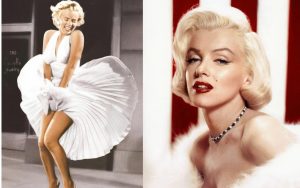
Over the years, certain red carpet moments have become iconic, shaping how people view award show fashion. These moments are often remembered long after the event ends. For example, Marilyn Monroe’s white dress in “The Seven Year Itch” or J.Lo’s green Versace gown at the 2000 Grammys are two examples that are still talked about today. These iconic looks have set high standards for future red carpet styles, influencing both designers and celebrities. Red carpet moments are not just about wearing beautiful clothes; they’re about creating an unforgettable image.
Social Media and Its Influence on Award Show Fashion
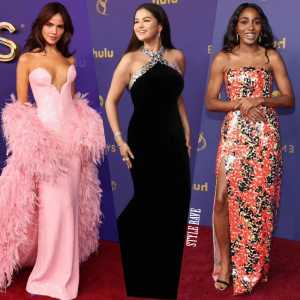
The advent of social media has dramatically changed the landscape of award show fashion. Platforms like Instagram, Twitter, and TikTok allow fans and fashion critics to instantly share and discuss red carpet looks, making fashion a global conversation. Celebrities are now able to showcase their outfits before the event even begins, and the power of influencer culture has made fashion even more accessible to the public.
Social media has also made it easier for stars to experiment with different styles and trends. The pressure to be photographed and go viral has influenced many stars to wear bold and unique outfits that generate buzz. Influencers and fashion bloggers now have significant power over shaping the conversation around award show fashion, with some even collaborating directly with designers to create exclusive looks.
The Role of Designers in Shaping Award Show Fashion
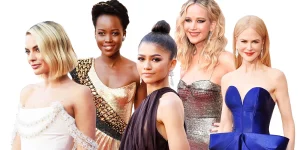
Designers play a huge role in shaping what celebrities wear to award shows. Their creativity and vision often set trends that influence what people wear in everyday life. When a celebrity wears a designer’s creation on the red carpet, it’s a moment of worldwide exposure. This has turned award show appearances into a powerful marketing tool for fashion houses, with designers often using these events to debut new collections. The connection between designers and celebrities is one of the main drivers of award show fashion.
Challenges of Award Show Fashion
Despite its glamour, award show fashion comes with challenges. The pressure to stand out and create memorable looks can be intense. Celebrities face criticism for both their choices and the designers they work with. Additionally, the sustainability of fashion has become a concern, with many questioning the environmental impact of extravagant dresses and suits. Financial costs can also be high, with some stars facing backlash for wearing expensive outfits while many struggle financially.
The Future of Award Show Fashion
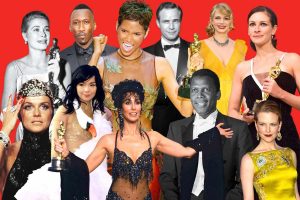
As we look to the future, it’s clear that award show fashion will continue to evolve. The lines between traditional and modern fashion will blur even more, with sustainable fashion, digital fashion, and virtual red carpets becoming more prominent. As fashion technology continues to advance, we may even see augmented reality (AR) or virtual reality (VR) influencing the way celebrities and fans experience fashion.
Inclusivity, sustainability, and self-expression will likely remain at the forefront of red carpet fashion. Designers are increasingly focused on creating eco-friendly, ethical pieces that align with modern values. At the same time, celebrities will continue to use their fashion choices as a way to make statements about social issues, personal identity, and individuality.
Analysis Table: Key Fashion Shifts in Award Shows
| Era | Key Fashion Trends | Iconic Celebrities | Notable Red Carpet Moments |
|---|---|---|---|
| 1920s-1930s | Glamorous gowns, silk, satin, velvet | Clara Bow, Jean Harlow | Early Hollywood elegance |
| 1950s-1960s | Haute couture, colorful designs | Audrey Hepburn, Grace Kelly | Hollywood glamour revived |
| 1980s-1990s | Power dressing, oversized shoulders, minimalism | Sharon Stone, Julia Roberts | Bold, structured fashion and minimalist styles |
| 2000s | Fashion risks, casual meets formal | Jennifer Lopez, Britney Spears | J.Lo’s iconic green Versace dress at the Grammys |
| 2010s | Individuality, gender fluidity, diversity | Lady Gaga, Rihanna, Zendaya | Met Gala-inspired red carpet moments |
Comparative Table: Fashion Trends vs. Social Impact
| Decade | Fashion Trend | Social Impact |
|---|---|---|
| 1920s-1930s | Classic elegance, formal attire | Focus on class and refinement |
| 1980s-1990s | Power dressing and minimalism | Empowerment, women’s roles |
| 2000s | Risk-taking, casual dress fusion | Changing celebrity culture and the rise of reality TV |
| 2010s | Gender fluidity, diversity | Breaking fashion norms, inclusivity |
| Future (2020s+) | Sustainable fashion, digital trends | Ethical fashion, global conversations on social issues |
Conclusion: The Impact of Award Show Fashion on Pop Culture
Award show fashion has undergone a remarkable transformation over the decades, reflecting shifts in society, culture, and technology. From classic elegance to bold self-expression, fashion on the red carpet has continually evolved, mirroring the changing roles of celebrities in the public eye. Social media and inclusivity have played key roles in shaping the modern fashion landscape, and the future promises even more innovation and creativity.
The evolution of award show fashion is not just about clothing; it’s about how celebrities use fashion to communicate their identity, challenge norms, and influence pop culture. As we move forward, one thing is certain: the red carpet will remain a powerful platform for fashion experimentation, self-expression, and cultural conversation.








